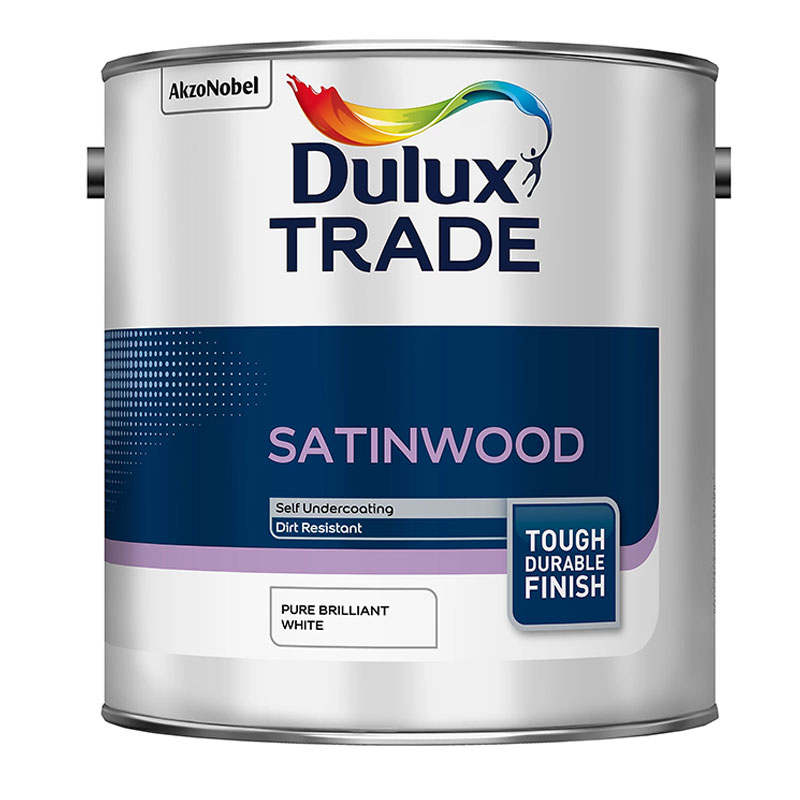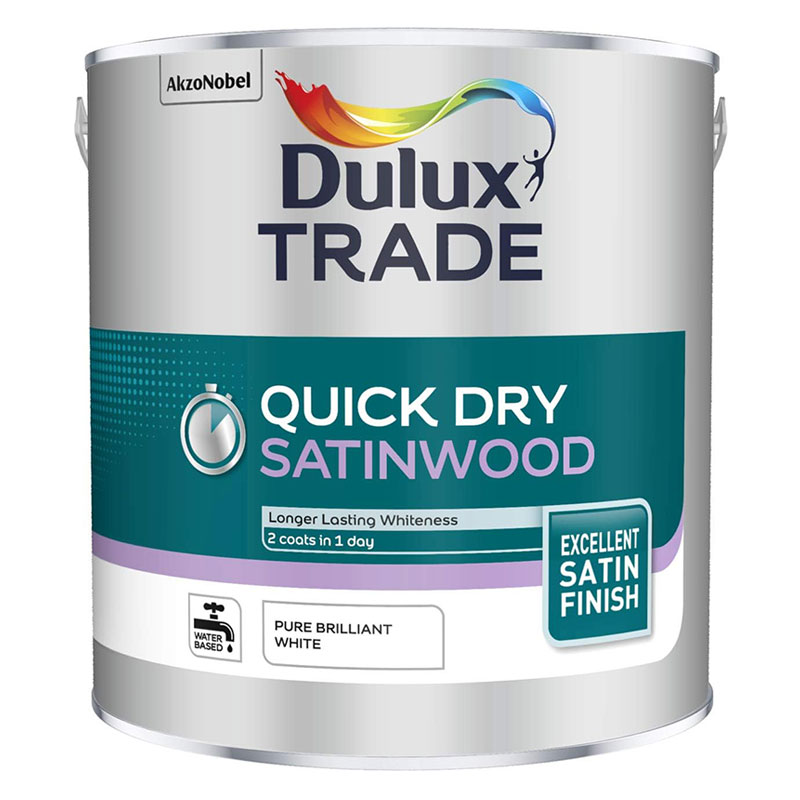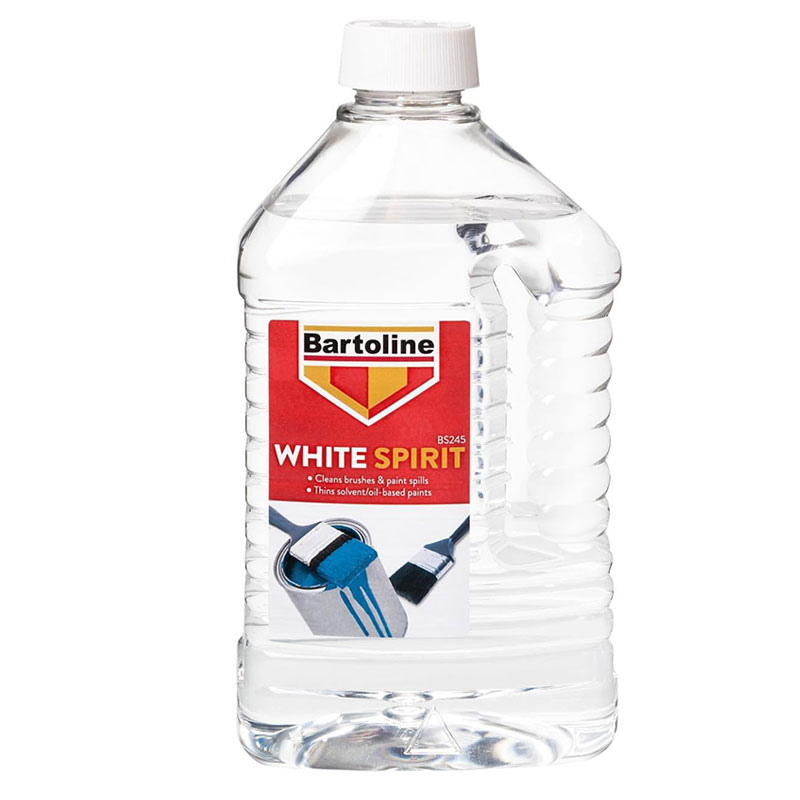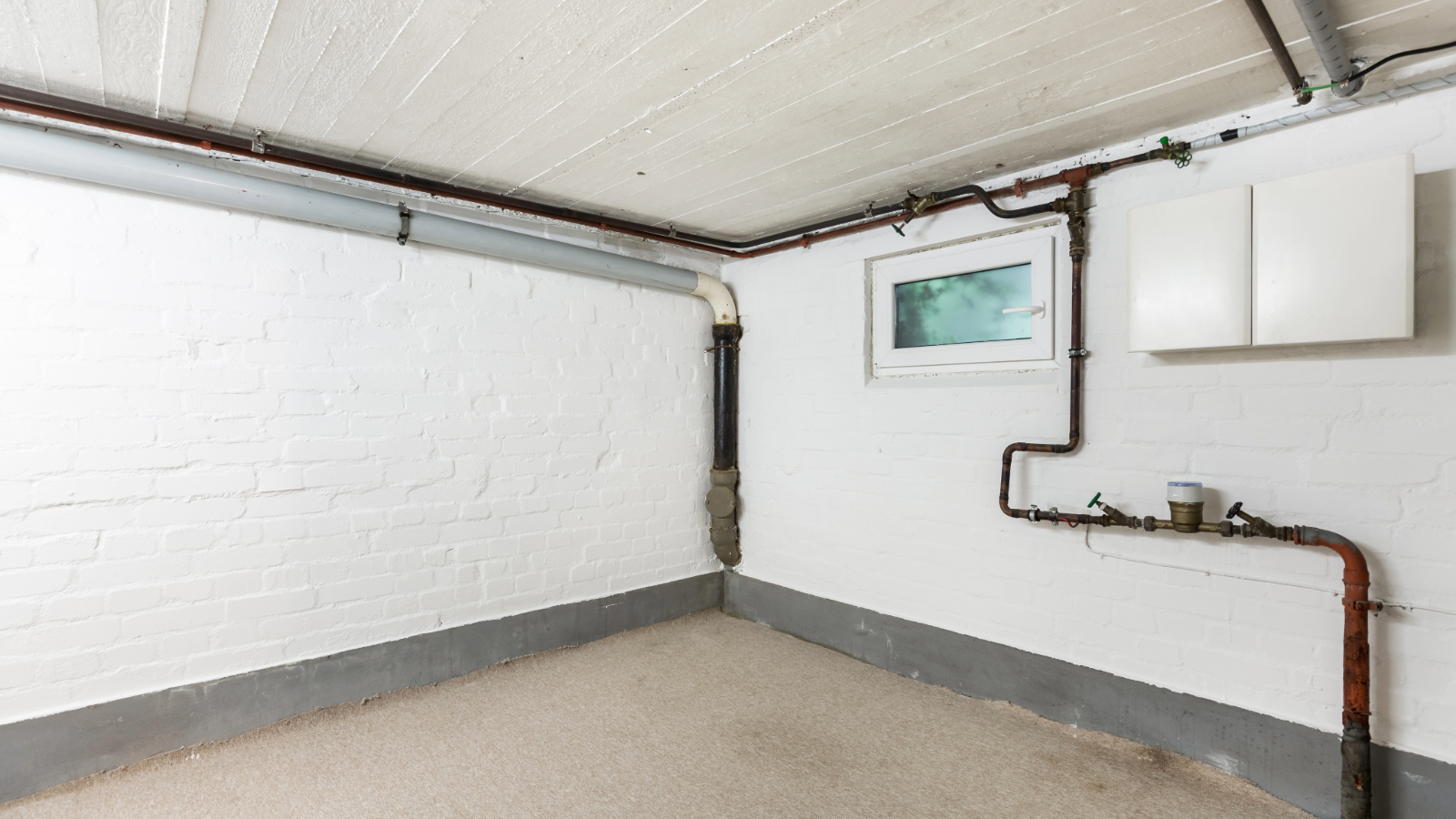Oil vs water-based paint: What's the difference and which will you need on your next paint project?
Whatever your next paint project, it will be a choice of oil vs water-based paint. Here we reveal what you’ll need to use where
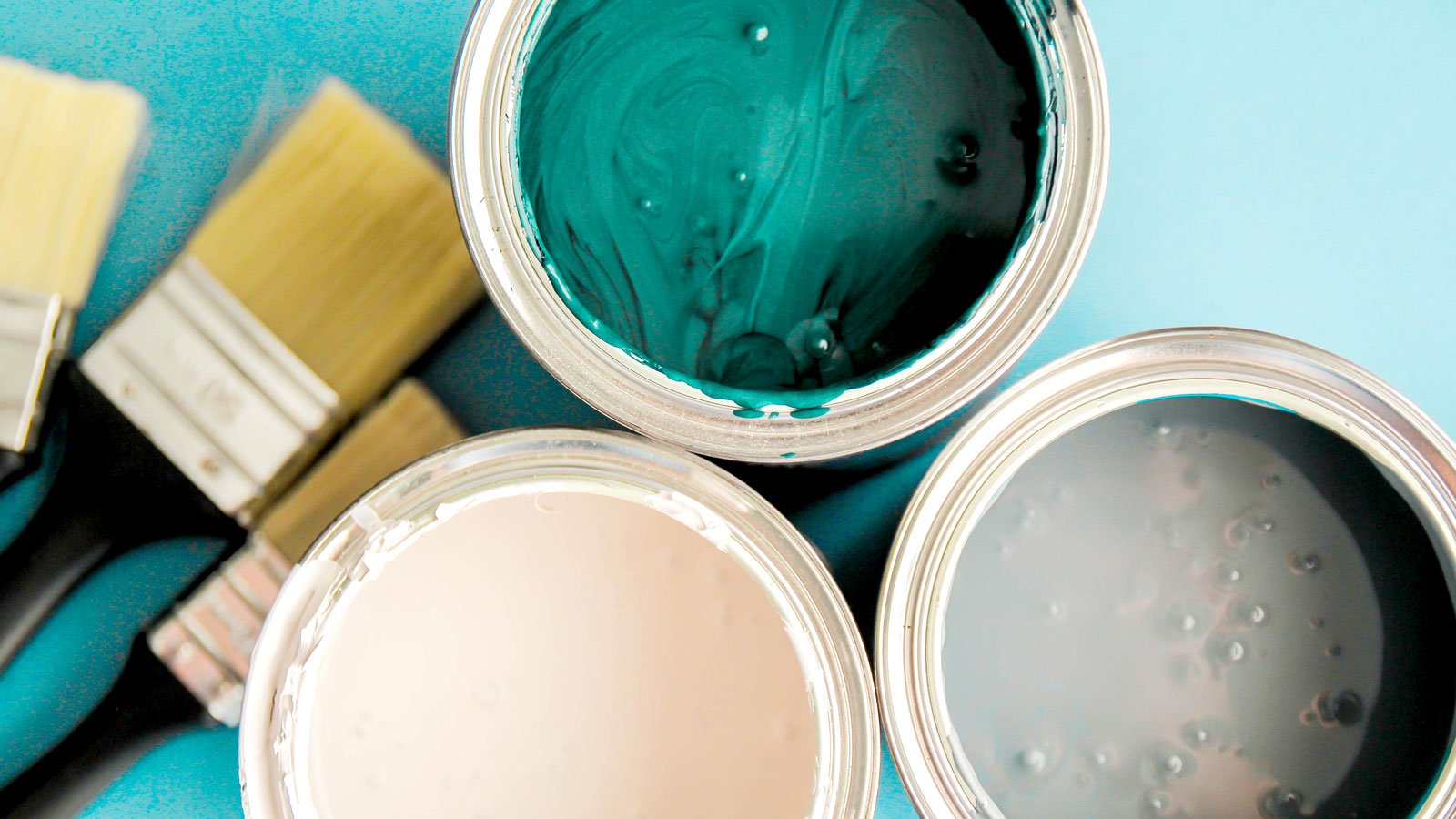
Oil vs water-based paint, which should you use for your next paint project? It’s a common conundrum and one that doesn’t have a straightforward solution. There’s a few factors you need to consider to ensure that you are making the right choice.
What surfaces are you painting? Are you painting a wall, or wood? Are you painting indoors or outdoors? Are you using paint brushes or rollers? Do you want a finish like the professionals? Do you want a more eco-friendly option? You’ll find the answers in this guide to help you make the right choice.
Oil vs water based paint: What’s the difference?
Paint is made up of a combination of components including pigments and binders. Pigment is what helps determine the colour of a chosen paint while binders are the element that helps hold the pigment in the liquid that the paint predominantly consists of.
In residential paints used around the home that liquid is water for water based paints and oil for oil based paints. As you might expect water is the main component for water-based paints and oil (often linseed oil) is the main component in oil based paints. Oil-based paints will typically include a mineral turpentine to help thin the paint and ensure a smooth flow when being applied.
Pros and cons of water-based paints
Water-based paints are the popular choice, especially for DIYers as they are more convenient to use. Here we list the plus and minus points.
+ Dries quicker Water-based paint contains a lot of water which evaporates much faster than oil-based paint. Typically drying times for water-based paints range from 30 mins to a couple of hours.
+ Easier to clean There’s no need for anything other than water from the tap to clean paintbrushes and rollers. You can clean brushes and rollers much quicker and they won’t leave any hard to remove paint residue on your hands or surrounding areas.
+ Smell less Water-based paints don’t contain the same chemicals, such as thinner, which causes the strong odour associated with oil-based paints. Leading to a much less pungent smell when painting.
+ Stays white longer The lack of certain chemicals in water-based paints means that the paint will stay white for longer as they are not affected by UV rays and heat as much as oil-based paints.
+ Eco-friendly Water-based paints contain less VOC’s (more of this later) which are harmful to the environment.
- Cures slowly Water-based paints dry quicker than oil-based paints, but typically take longer to fully cure (harden). This can leave them more susceptible to being knocked and chipped.
- Lower sheen For high gloss finishes that have a high sheen you typically need an oil based paint. The difference between the oil based and water-based gloss is subtle, but if you are working with high quality specialist finishes go for an oil-based gloss.
Bring your dream home to life with expert advice, how to guides and design inspiration. Sign up for our newsletter and get two free tickets to a Homebuilding & Renovating Show near you.
Pros and cons of oil-based paints
Oil-based paints are more commonly used by trades as they offer a stronger finish, but you often have to pay a little extra
+ Easier to work with Oil-based paints contains a thinner to give the paint a a smooth flow that makes it easier to apply and its longer drying times mean you see less brush strokes in the finish.
+ Better durability The make-up of oil-based paint means that they harden to a higher level than water based paint. This gives them a more durable finish that is less susceptible to chipping and will stay looking good for longer.
+ Higher sheen Oil-based paint produces a higher sheen than its water based counterpart thanks to the natural elements found in oil.
- Longer drying time The drying times for oil -based paint is much longer than water-based paints. It is typically touch dry in 4-6 hours and ready to recoat in 16-24 hours. So make sure to plan ahead on a project.
- Harder to clean A specialist brush cleaner or White Spirit is needed to clean paintbrush and rollers. This makes the process less convenient, more expensive and less environmentally-friendly.
- Yellowing Oil-based paints are more prone to yellowing thanks to the oxidation process which is affected by heat. This is especially noticeable in white paints.
- Not so eco-friendly Oil-based paints contain a higher level of VOCs, which equates to more toxic chemicals in the paint, which are not good for the environment. So they need to be disposed of more carefully.
Try these top quality paints and cleaner
What is the best paint for wood and walls?

Michael Rolland is a painting expert and MD of The Paint Shed. They have evolved from painting contractors to retailers. Michael has years of experience within the painting industry, using this expertise to influence his own DIY projects using the best possible tools and materials.
What is the paint best for wood?
Should you use oil-based or water-based paint on wood? It’s not that simple. “Choosing the best paint for wood can depend on several factors,” Michael Rolland, Managing Director at The Paint Shed explains. “It includes whether you are working with interiors or exteriors, the desired durability, finish, and ease of application.”
Both have their pros and cons, shares Rolland, “Oil-based formulas are usually water-repellent, protective against UV rays, and have antifungal formulas.” This makes them ideal for exterior projects. “High-quality oil-based paints are easy to apply, hide imperfections easily, and are long-lasting,” continues Michael.
But there are downsides, “Oil based paints regularly take longer to dry and have higher levels of VOCs during the drying and curing process,” states Rolland. “Which requires additional ventilation to minimise the scent throughout your home”
“Water-based paints have been developed to be increasingly durable”, shares Michael, “Which makes them great for projects based on interior and exterior wood.”
“Some quality water-based paints can be used for both interior or exterior projects”. Rolland recommends Zinsser’s Water Based Exterior Satin. “It is a great option due to being low maintenance, durable, self-priming, and offering high levels of resistance to weather.”
What is the best paint for walls?
"Water-based paints are most recommended for interior walls” reveals Rolland. “This is due to their ease of application, fast drying times, and the fact that they emit fewer harmful fumes, making them safer for indoor use.” He continues, “Quality water-based paint formulas provide excellent durability and a variety of finishes, making them suitable for almost any interior walls.”
But which paint should you use? “Advancements in water-based paints, particularly high-quality acrylics, have made them durable and easy to maintain,” continues Rolland. “For example, Farrow and Ball’s Modern Emulsion and Benjamin Moore’s Ultra Spec Scuff X, despite being water-based, are suitable for both high-traffic commercial and domestic settings. The formulas are washable, scuff-proof, and low maintenance making them ideal for interior walls that face wear and tear.”
FAQs
What are VOCs?
VOCs, or Volatile Organic Compounds are chemicals (typically man-made) that are used and produced in the manufacture of paint. These give paint its distinct odour and can have short and long term health effects. But, don’t panic, they are regulated and can be dispersed by opening a window or door if painting indoors.
Oil-based paints typically have higher VOCs than water-based paints because they have more solvents and chemicals in them. The higher the VOC level the more damage they can do to the environment. So, oil-based paints especially, need to be disposed of correctly. Ideally try to use or donate any leftover paint, but if you can't check with your local recycling centre for guidance. Do not put paint down the sink.
As an example, Dulux Trade Satinwood (which is oil-based) has a high VOC content which is 25-50%. It states on the tin ‘This product contains max. 300g/l VOC’, so around 30%. Dulux Trade Quick Drying Satinwood (which is water-based) has medium VOC content which means it contains 8 – 24.99%. Low VOC paints contain 0.30 – 7.99% VOC content.
Try to look for paints with Low VOCs, which are almost always water-based, as they are better for you and the environment.
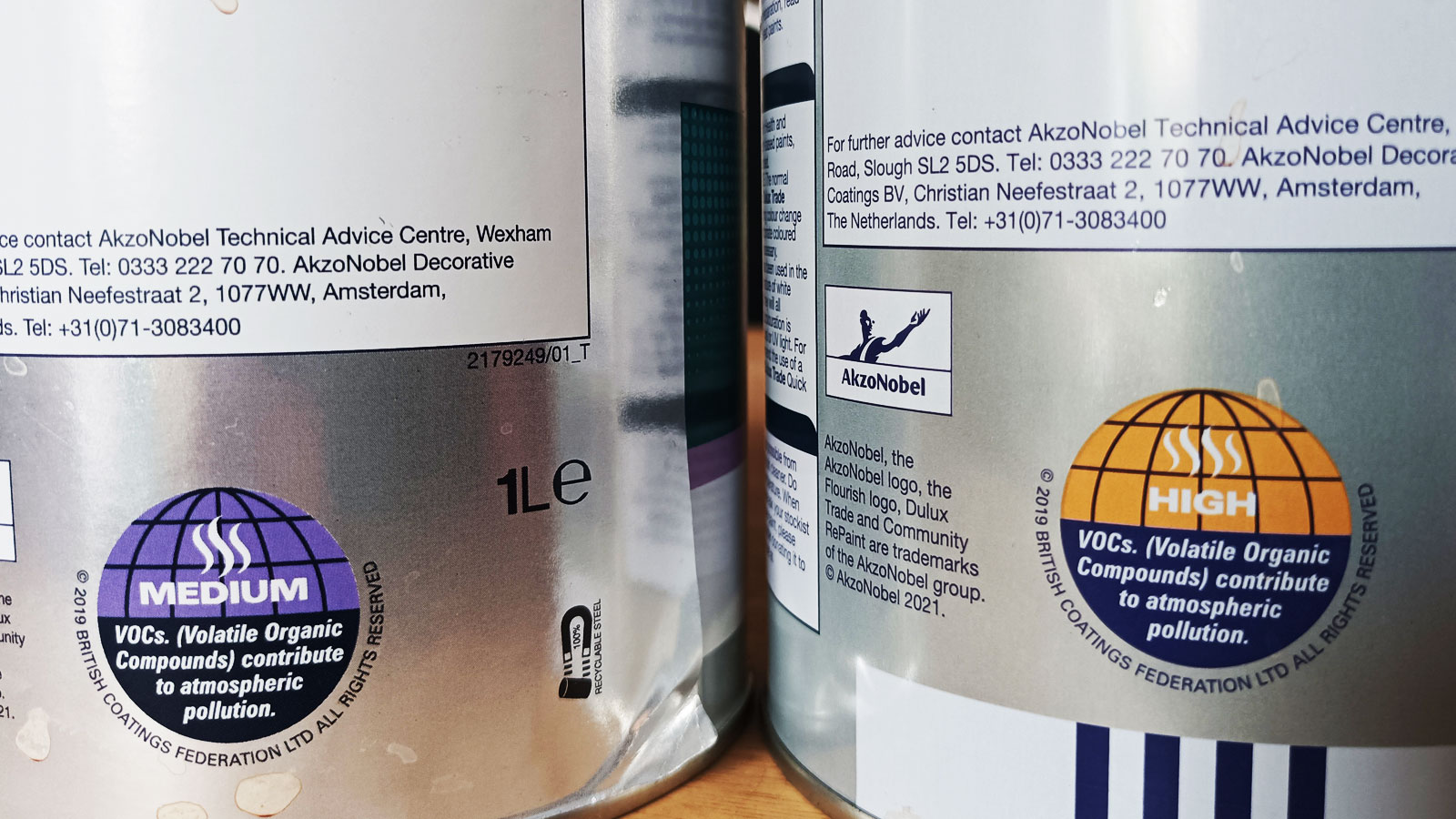
Can you paint over water based paint with oil based paint?
Yes. And you can do the opposite, use water-based paint to paint over an oil-based paint. It is common to use an oil-based paint when painting over mould or damp to create a seal that will help stop any moisture or mould seeping through to the top layer of paint, which is typically a water-based paint such as emulsion.
Ideally when painting over an oil-based paint with a water based paint, try to avoid one with a high sheen like gloss. This doesn’t provide good adhesion for most water based paints. If you are looking to add a water-based paint over an oil-based gloss, for example when painting skirting boards, get rid of the sheen with a fine grit sandpaper and add a water-based undercoat and top coat.
When working on paint projects such as painting a panel door, painting wood and painting floorboards make sure that you get the right paint to do the job properly.
Steve Jenkins is a freelance content creator with over two decades of experience working in digital and print and was previously the DIY content editor for Homebuilding & Renovating.
He is a keen DIYer with over 20 years of experience in transforming and renovating the many homes he has lived in. He specialises in painting and decorating, but has a wide range of skills gleaned from working in the building trade for around 10 years and spending time at night school learning how to plaster and plumb.
He has fitted kitchens, tiled bathrooms and kitchens, laid many floors, built partition walls, plastered walls, plumbed in bathrooms, worked on loft conversions and much more. And when he's not sure how to tackle a DIY project he has a wide network of friends – including plumbers, gas engineers, tilers, carpenters, painters and decorators, electricians and builders – in the trade to call upon.
